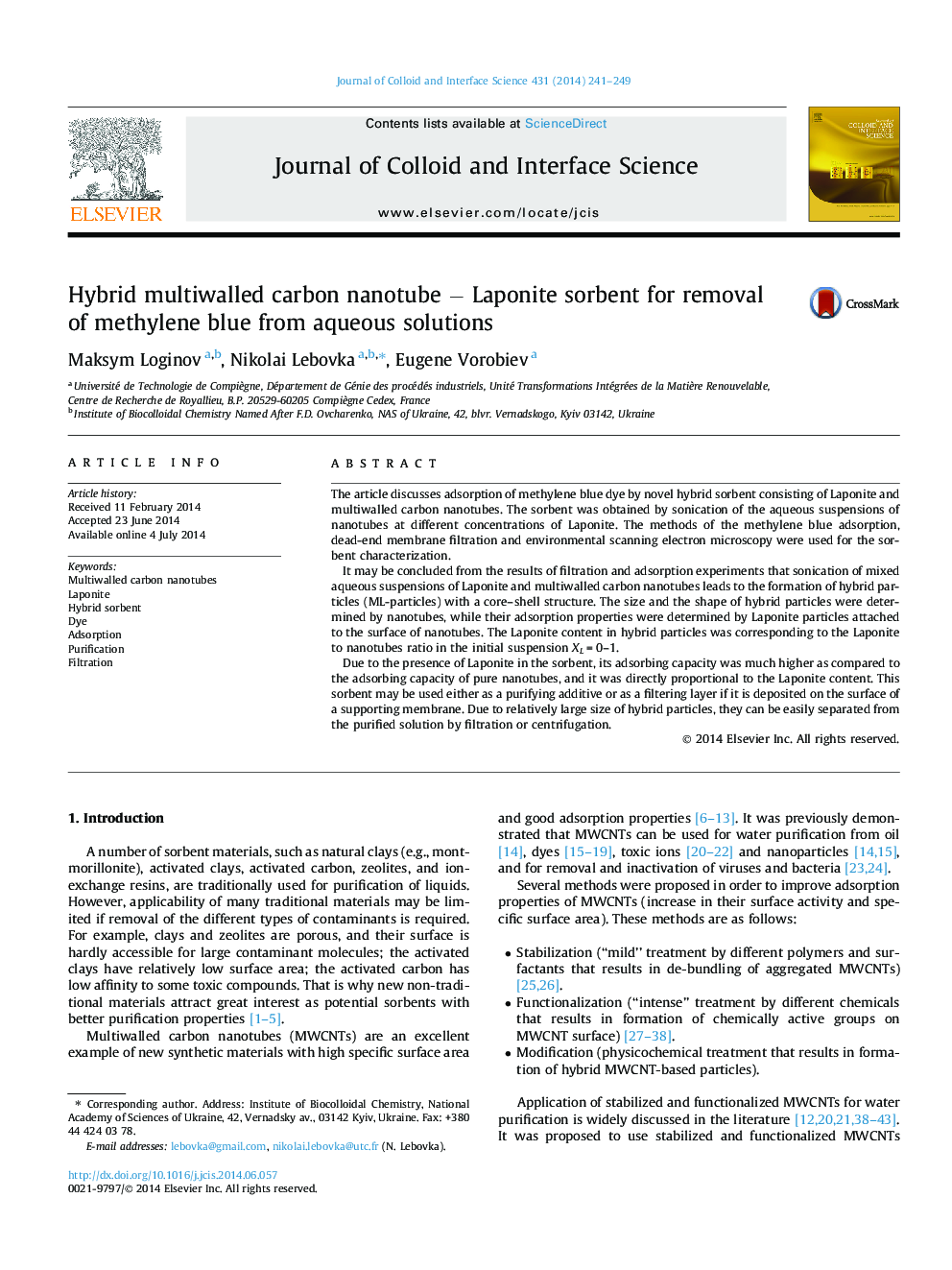| کد مقاله | کد نشریه | سال انتشار | مقاله انگلیسی | نسخه تمام متن |
|---|---|---|---|---|
| 607087 | 1454564 | 2014 | 9 صفحه PDF | دانلود رایگان |

• Novel hybrid sorbent based on nanotubes and Laponite was obtained.
• Adsorption of methylene blue by hybrid particles with core–shell structure was studied.
• Size and the shape of hybrid particles were determined by nanotubes.
• Adsorption properties were controlled by Laponite particles.
• Hybrid particles can be easily separated from the purified solution.
The article discusses adsorption of methylene blue dye by novel hybrid sorbent consisting of Laponite and multiwalled carbon nanotubes. The sorbent was obtained by sonication of the aqueous suspensions of nanotubes at different concentrations of Laponite. The methods of the methylene blue adsorption, dead-end membrane filtration and environmental scanning electron microscopy were used for the sorbent characterization.It may be concluded from the results of filtration and adsorption experiments that sonication of mixed aqueous suspensions of Laponite and multiwalled carbon nanotubes leads to the formation of hybrid particles (ML-particles) with a core–shell structure. The size and the shape of hybrid particles were determined by nanotubes, while their adsorption properties were determined by Laponite particles attached to the surface of nanotubes. The Laponite content in hybrid particles was corresponding to the Laponite to nanotubes ratio in the initial suspension XL = 0–1.Due to the presence of Laponite in the sorbent, its adsorbing capacity was much higher as compared to the adsorbing capacity of pure nanotubes, and it was directly proportional to the Laponite content. This sorbent may be used either as a purifying additive or as a filtering layer if it is deposited on the surface of a supporting membrane. Due to relatively large size of hybrid particles, they can be easily separated from the purified solution by filtration or centrifugation.
Figure optionsDownload high-quality image (113 K)Download as PowerPoint slide
Journal: Journal of Colloid and Interface Science - Volume 431, 1 October 2014, Pages 241–249